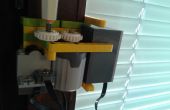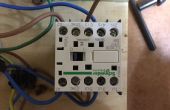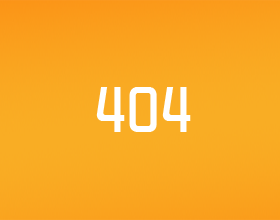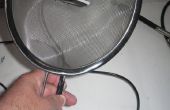Stap 7: Programmeren van de afstandsbediening:






Met behulp van alle verworven competenties van elke module hoeft aan te passen van de programma's aan de kenmerken van de afstandsbediening door in twee programma's te koppelen: één voor de arduino afstandsbediening werkt als een zender en een ander programma voor arduino hexapod hexapod als een ontvanger opereert.
Volgens de grenzen van de beweging van de servo's, die ik kreeg van mijn vorige instructable, moet u de kaart opdracht arduino gebruiken om de waarden van de potentiometers en de versnellingsmeter binnen de minimale grenswaarden voor bereik van de beweging van de servo's te converteren. Wordt als volgt:
<p>values[0] = map(values[0], 23, 1000, 900, 1500); //Value from slider pot</p><p>values[1] = map(values[1], 23, 1000, 2100, 1540); //Value from slider pot<br>values[3] = map(values[3], 1, 1033, -295, 295); //Value from y-axis of right joystick values[4] = map(values[4], 1, 1023, -295, 295); //Value from y-axis of left joystick values[5] = map(values[5], 1, 1023, -360, 360); //Value from x-axis of left joystick values[6] = map(values[6], 170, 500, -360, 360); //Value from x-axis of the accelerometer values[7] = map(values[7], 170, 510, -360, 360); //Value from y-axis of the accelerometer</p>
Met behulp van een van de knoppen op een van de joysticks die ik gebruiken het voorbeeld op arduino-pagina die bestaat wilde in het tellen van het aantal keren dat een knop wordt gedrukt om te maken van verschillende modi waarin de hexapod hexapod zal verplaatsen.
http://Arduino.CC/en/tutorial/ButtonStateChange
<p>/* State change detection (edge detection)<br>This example shows how to detect when a button or button changes from off to on and on to off. */ // this constant won't change: const int buttonPin = 2; // the pin that the pushbutton is attached to const int ledPin = 13; // the pin that the LED is attached to // Variables will change: int buttonPushCounter = 0; // counter for the number of button presses int buttonState = 0; // current state of the button int lastButtonState = 0; // previous state of the button void setup() { // initialize the button pin as a input: pinMode(buttonPin, INPUT); // initialize the LED as an output: pinMode(ledPin, OUTPUT); // initialize serial communication: Serial.begin(9600); } void loop() { // read the pushbutton input pin: buttonState = digitalRead(buttonPin); // compare the buttonState to its previous state if (buttonState != lastButtonState) { // if the state has changed, increment the counter if (buttonState == HIGH) { // if the current state is HIGH then the button // wend from off to on: buttonPushCounter++; Serial.println("on"); Serial.print("number of button pushes: "); Serial.println(buttonPushCounter); } else { // if the current state is LOW then the button // wend from on to off: Serial.println("off"); } } // save the current state as the last state, //for next time through the loop lastButtonState = buttonState; // turns on the LED every four button pushes by // checking the modulo of the button push counter. // the modulo function gives you the remainder of // the division of two numbers: if (buttonPushCounter % 4 == 0) { digitalWrite(ledPin, HIGH); } else { digitalWrite(ledPin, LOW); } }</p> Ik zet dit voorbeeld en aanpassing aan mijn sketchs van de afstandsbediening en de receptor. Dus
Dus maak ik drie modi van bewegingen:
- Het ene maakt dat het lineaire potentiometer en joysticks verplaatsen de hexapod hexapod
- De tweede maakt joysticks, de potentiometer en versnellingsmeter verplaatsen de hexapod hexapod
- En de laatste mode laat bewegen de hexapod lopen, lopen achteruit, enz bewegende gelijktijdig de twee joystick












